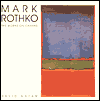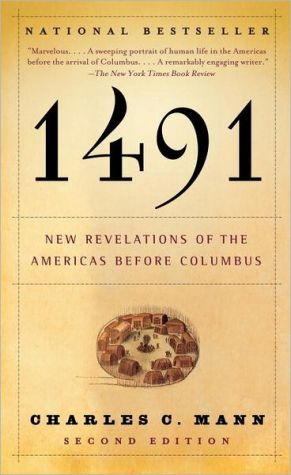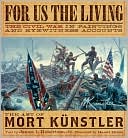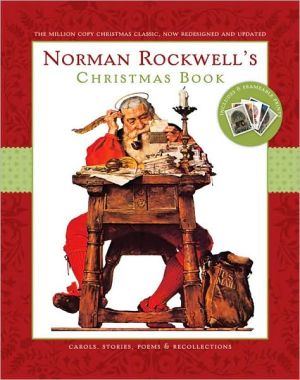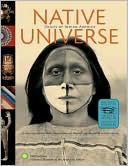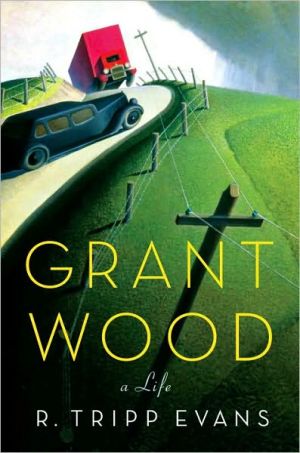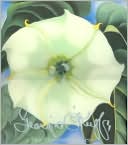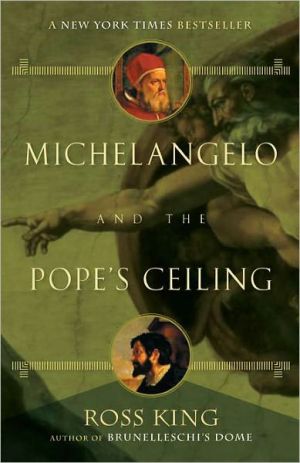Mark Rothko: The Works on Canvas
This extraordinary book is the first volume of the definitive catalogue raisonné of Rothko'swork. It documents his entire output of paintings on canvas and panel, reproducing all theworks in color. An introductory text also investigates every essential feature of his art.Published in association with the National Gallery of Art, Washington .
Search in google:
This extraordinary book is the first volume of the definitive catalogue raisonné of Rothko'swork. It documents his entire output of paintings on canvas and panel, reproducing all theworks in color. An introductory text also investigates every essential feature of his art.Published in association with the National Gallery of Art, Washington .Art ForumFar and away the best monograph ever written on Rothko.
\ \ \ \ \ Introduction\ To See Rothko\ We face an austere image. It is almost a blank facade, an expanse of perhaps two or three colors which seem to have materialized from nowhere like a mirage, instilling themselves into our sight. The initial impression might approach a blur were it not fixed by a spartan design which echoes the shape of the rectangular object that supports it. This foundation, the material ground, coexists slyly with the air of illusion breathed by the image. If we are literal-minded, the first aspect dominates, and our view fastens on a flat surface, foursquare and vividly tinted. If we tend toward the imaginative, our experience waxes metaphorical and we gain a greater sense of light and space, looking through that surface as though it concealed depths and veiled radiances. Whatever the standpoint, the work responds with a certain stealth, meeting the onlooker with the kind of frontal, vertical and symmetrical order associated with the poise of a human being (and even mimicking the tripartite division of our bodies into head, torso and legs), while revealing little about its real intent. That something has been declared remains beyond doubt. Why else this largeness and intensity? Why else a feeling that our vision is filled to the brim? Why the combative simplicity that suggests a riddle? The glowing silence and suddenness of it all seem to dare us to blink.\ We blink and then the painting, as it were, returns -- the same but different. New aspects, details and relations unfold. The object of our attention still bulks large, except that its relative scale shrinks as our acquaintance grows. Apalette which a moment or two ago appeared warmly harmonious now reveals fragile discords. Perhaps pungent minor notes of lime have emerged in an erstwhile clear yellow; or dim layers may lurk underneath a rich red; or, as the daylight changes, that same crimson begins to look cooler, somehow nearer to purple. The colors themselves are like the impalpable, transient ones that we see behind our eyelids when we close our eyes. At the edges of the fields, too, things are less stable. There we notice tiny halos or rills of unexpected hue and realize that while one border is crystal clear, another falters and fades away. The various edges in turn affect the quality of the regions that they bound: a hard contour renders them subtly flatter, whereas a hazy margin insinuates a deeper color-space within. These contrasts prompt us to delve into the surface further. Some areas are matte, others have a sheen that catches the light. Indeed, the broad rectangular planes may contain rather small, wayward strokes -- accents and irregularities that are anything but monolithic. Moreover, the "monoliths" are not quite the paragons of equipoise that we had supposed them to be. Either they are sometimes subliminally skewed, or they have proportions calculated to imply their compression into the regions they inhabit. In short, the whole superficies is changeful -- less an inert screen than a membrane shifting from taut to loose, diaphanous to dense, as we probe it. And, like a covering, it extends as pigment around the sides of the canvas. These colored edges inflect the virtual space with a slender but actual third dimension, more implicit than perceived outright.\ Thus an image that at first feigned to yield everything to vision evolves into one that evidently conceals. The composition has the aura associated with frameworks such as a cinema screen or a theatrical proscenium when seen or, more accurately, remembered (given the prevailing haziness) at the instant just before or after an event has taken place within them. This is because there is vacancy and effacement rather than manifest action and form. Offering itself brightly to the glance, the picture in the end elicits a slow gaze and subverts, even as it invites, our acquiescence in illusion: an iconoclastic icon. That drift from assurance to bafflement holds us in thrall, wondering. This is, of course, a basic account of seeing a painting by Mark Rothko. To be sure, it has been given in schematic, summary terms. Nor can it claim to be objective, since the point is that such artwork exalts subjectivity. Reading it is, to an unusual pitch, indexed to the beholder's powers of sentience. This undertow of self-reflexive awareness and duration goes toward configuring the experience; the art is structured to promote a transaction which clusters the seer and the thing seen in a tense, refracted union. As the ideal of coaxing the spectator's complicity with the functioning of a work of art had developed during the Renaissance, so Rothko finally leads it to a point of no return. His images posit our presence and seduce us into interpreting them. It is as well to start here.\ First, Rothko's achievement has generated a body of commentary which is profuse even by the standards of the already voluminous and ever-expanding literature on the movement of which he was a leader, abstract expressionism. The size of the bibliography to the present volume, though it is by no means exhaustive, speaks for itself. Embedded within this critical mass are signposts to most of the main intellectual trends of twentieth-century culture and, by extension, of the genres of art history. The tactics encompass Freudianism, Marxism, Trotskyism, existentialism, semiology, post-structuralism, formalism, deconstruction, eschatology, feminism, iconography, biography, personal reminiscence, theology, nature imagery, cultural history and theories of the sublime and of the body, not to mention the input from art conservators and, from quite another constituency, the deluge of journalism in response to the legal travails that followed Rothko's death as well as at least one film spurred by that topic. The figure at the center of these diverse perspectives stands at once among the most closely examined and elusive painters of the century. In this respect he can be likened to Franz Kafka.\ What the eminent literary critic Erich Heller has written about Kafka's responsibility for "the massive interpretive superstructure" that has thrived on his art applies alike to Rothko. Heller characterizes Kafka as "the creator of the most obscure lucidity in the history of literature, a phenomenon that, like a word one has on the tip of one's tongue, perpetually attracts and at the same time repels the search for what it is and means." By no coincidence, Kafka was one of the modern writers most admired by Rothko. Rothko's signature "image" has, above all, the Kafkaesque ability to manipulate simple components for complex ends. Like Kafka, by combining opposites -- the lucid and the obscure, serenity and disquiet, order and dissolution -- Rothko formulated a paradoxical visual unity that could feed a multitude of interpretations. His quintessential idiom from 1950 onward resembles a parable by simulating a plain statement which, on the receiver's side, motions toward all manner of hidden meanings and analogies. One cannot overlook a certain "period" resonance as well to this pact with spectatorship. It toys with tensions about selfhood and seeing, similar to those that encroach everywhere on the cultural spaces of America in the mid-century years. They reach a parallel climax in the domains of uncertainty, alienated blankness and illusion that characterize the various "magic" realisms of the era and also the cinematic genre of so-called "film noir," with its insistence upon watchers and watched who intimate unknown narratives hidden behind the surface of reality. That Rothko sought his own version of this intricate exchange with an audience is clear from both his public manifestos and epigrammatic personal jottings, such as the following: "The idea of the public and the private/The facade/Hide & Seek/Secrets." Rothko's persona has been described as suggestive of "ancient wisdom, almost Talmudic" and as that of someone who "felt strongly that he belonged to a great Judaic tradition." His affinity with Kafka reflects their joint ties to a Judaic heritage which, through riddles and parables, was adept at veiling intangible senses behind "simple" fronts (a device that also happened to give rise to ceaseless exegesis).\ In The Genesis of Secrecy, a study of this venerable rabbinical and Christian tradition, Frank Kermode describes the two levels of meaning that it employs as "carnal" (that is, manifest, prosaic, profane) and "spiritual" (latent, manifold, transcendent). Rothko was no stranger to the distinction. On the occasion of his 1961 retrospective at the Museum of Modern Art he remarked: "If people want sacred experiences they will find them here. If they want profane experiences, they'll find those too." Given the divergence of views on Rothko, it helps to regard them in light of this span that stretches from the mundane to the recondite, the "carnal" to the "spiritual". At one extreme, for example, is the ironic literalism of Man Ray, who revised Rothko's format as the trite worldly delights of peaches and cloud puffs set in shadow-box scenery a la Joseph Cornell (fig. 1). At the other limit is the famous art historical comparison with the pantheist vistas represented by romantic artists such as Caspar David Friedrich (fig. 2). A third option is epitomized in the post-modernist photographs by Hiroshi Sugimoto who rediscovers Rothko's haunting effects, like anachronistic objets trouves, in the contemporary suburban milieu (fig. 3). To recall that behind these poles of detachment, metaphysical absorption and cultural artifice -- all stimulating misprisions, in view of Rothko's total lack of rapport with nature and landscape per se ("there is no landscape in my work") -- stands neither more nor less than the encounter with that "almost blank facade" described at the outset is to keep sight of the originary object against its shifting audiences.\ Secondly, a prime purpose of a catalogue raisonne is the recuperation of these "objects" -- the physical facts of an artist's output -- into an ordered scheme that provides a platform for future scholarship and interpretation. In Rothko's case, it is worth noting how much has already been assumed and written, without the full disclosure of the oeuvre and the perspectives to match. The ratio of criticism to knowledge ought to give pause for thought, insofar as essential features of the corpus -- including particulars of dating, titles, exhibition history and even the existence of significant paintings -- have either remained speculative, or been mistaken or neglected. Figuratively speaking, a state of diaspora has come close to being taken for granted.\ Among the slight yet telling symptoms of the situation one might mention Michel Butor's linkage of the title and imagery of a 1954 painting, Light Earth and Blue, to the fiat lux of Genesis, a connection that revolves around an erroneous notion that the title was Light, Earth and Blue. Or it transpires that a composition once thought to be "abandoned as incomplete" (cat. no. 487) was included in one of his more important solo shows. From another angle, to know which works the artist chose to present at, say, the Riverside Museum in 1941 is to glean an insight into his outlook -- already dualistic, as it happens -- at a key but otherwise little-documented juncture. The same holds true for an unexhibited "transitional" (cat. no. 322) that lays bare a strategic backward glance to the subjects of the 1930s at just the moment when Rothko was poised to leap forward into abstraction. Alternatively, while Oedipus (cat. no. 179) has long been discussed in the literature in conjunction with its pathbreaking companion, Antigone, scholars have never re-identified it. Rothko's use of multifarious (and especially pre-modern) pictorial and literary sources, although much expanded by recent studies, also remains underestimated. In sum, the enigmatic intensity of his hallmark style makes the record of its background, development and scope all the more necessary a basis for its understanding. A canonical presence in terms of both abstract expressionism (as the breadth and depth of criticism to date confirm) and in the wider context of the modernist project of abstraction (by the close of the century it looks as though no credible history of this topic could omit Rothko), the Rothko canon entertains a special and longstanding claim to be defined.\ This introductory essay therefore centers upon discoveries, difficulties and conclusions deriving predominantly from research fueled by the drawing up of the catalogue. In current language, it might be termed site-specific. At the inception of the entire project, one sine qua non was to order the chaotic chronology of the oeuvre as it then stood. That directive has consequently provided an organizing principle for the text and is coupled to the course of the exhibition history (and its attendant wealth of inscriptions and recuperated titles, which themselves influence a reading of the corpus). Other features, such as the progress of Rothko's imagery, symbolism and technique, are incorporated into this guiding infrastructure.\ Since numerous studies have recounted Rothko's history in varying degrees of detail, I have sought to avoid repeating the routine facts and themes that are by now ensconced in the literature in preference to thorny or less trafficked ones such as the interrelations between individual pictures and the role of sources. To speak of "sources" strikes a cautionary note, insofar as it may be objected that they impoverish the reading of images by trying to "explain" all. This is not how they are meant to function here, nor how Rothko himself saw their agency. During the lawsuit that he brought against the Macmillan publishing company in 1928 to gain proper crediting for his illustrations to the rabbi Lewis Browne's The Graphic Bible, Rothko declared the opposite: "Nothing is ever a copy which changes the original." All the models proposed should be taken in this spirit: as suggestions (which the reader is, of course, free to accept or reject on the strength of the visual or other corroboration) put forward to enrich a sense of the range and resourcefulness of Rothko's practice. In other words, the premise is that looking at the original source of inspiration\ A massive biography and specialist writings on areas such as the "multiforms," the Seagram project, the Chapel commission and the late paintings -- to name but a few -- seemed also to make it prudent to spare the reader a repeat performance of their attainments, except where alternative approaches perhaps beckon a fresh insight. And that applies to observations on Rothko's technique and the general content of the art. Both are explored on the principle that the "what" of things, the "content," is inseparable from the "when" and the "how," but they are not pursued so far as to make the catalogue into a conservation study, nor are they forced to collude with the minutiae of Rothko's life and beget a full-fledged monograph. On each count, my agenda has been more to delve, suggest, enumerate and outline -- giving priority here to the creations over their creator -- rather than to essay the last words on a subject that promises to remain perennial. As already stated, the critical arena for Rothko has risen to nearly a capacity audience and, on the other hand, his technical procedures were anti-systematic -- varying between canvases done side by side -- and liable to make any blanket program of conservation analysis a quixotic enterprise. Such goals are best continued elsewhere, as is the ongoing tendency to theorize and demythologize Rothko's achievement. As a secondary line of study, however, I have tried to isolate recurrent concerns that are apposite to an informed purview, such as the variety of facture and surface, iconographic continuities or -- from more unusual angles -- the thematics of, say, marginality, shadow, time and the effect of Platonism on Rothko's sensibility. On the assumption that matters well-known tend to take care of themselves and that scrutiny should address what has been under-illuminated, my emphasis therefore often lies upon such problematics and the more shadowy corners of the oeuvre, as well as on its earlier half (the two are wedded), in order to complement facts that are already familiar and so hopefully to bring the whole into sharper focus.
Foreword Preface and Acknowledgments Guide to the Catalogue Raisonne4 The Paintings of Mark Rothko: A Complex Simplicity10 Introduction: To See Rothko11 Surveying the Rothko Canon16 Chronology: Inventory, Dates, Inscriptions and Titles19 I. The Early Years: 1924-193926 II. The Years of Transition: 1940-195046 III. The Classic Years: 1951-197070 Catalogue Raisonne107 Concordance of Estate and Catalogue Numbers674 Works in Public Collections676 Reference Abbreviations677 Bibliography681 Illustration Acknowledgments696 Index698
\ Phyllis Tuchman...Anfam has introduced all sorts of new art historical sources....Solely focused on his subject's output, Anfam is...limited in his orientation. Since he is very good with what he does, Anfam should be read in tandem with [Mark Rothko by Jeffrey] Weiss. \ —Art Journal\ \ \ \ \ Art ForumFar and away the best monograph ever written on Rothko.\ \ \ Library JournalWhen Mark Rothko (1903-70) started his career in New York in the early 1920s, America had no established art. Before his tragic suicide, he completed a mural series for the Rothko Chapel commissioned by the de Menil family, accomplishing for American painting what the Monet water lilies did for French painting in the 1920s. Recently, Rothko has received renewed attention with a traveling retrospective from the National Gallery, currently at the Whitney Museum in New York. Anfam (Mark Rothko: The Chapel Commission, Menil Foundation, 1996) connects Rothko to major figures in art history with a historical, philosophical, literary, mythical, and psychological framework for the artist's development as a painter. Within the catalog itself the reproductions are grouped chronologically, with a complete concordance. Inscription, collection, provenance, and exhibition and publication information for each painting are also provided, and the book closes with the most extensive bibliography compiled on Rothko to date. Lacking only is a chronology of the artist's life. The catalog will continue with works on paper in additional volumes. A necessary purchase for research and academic libraries.--Ellen Bates, New York\ \ \ \ \ Phyllis Tuchman...Anfam has introduced all sorts of new art historical sources....Solely focused on his subject's output, Anfam is...limited in his orientation. Since he is very good with what he does, Anfam should be read in tandem with [Mark Rothko by Jeffrey] Weiss.\ — Art Journal\ \
